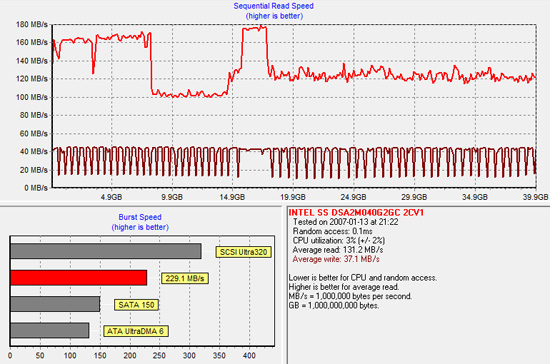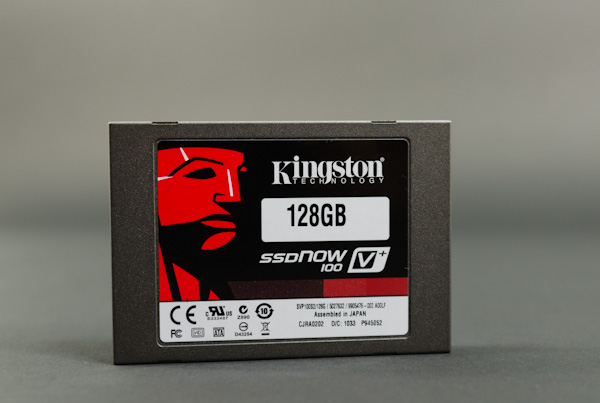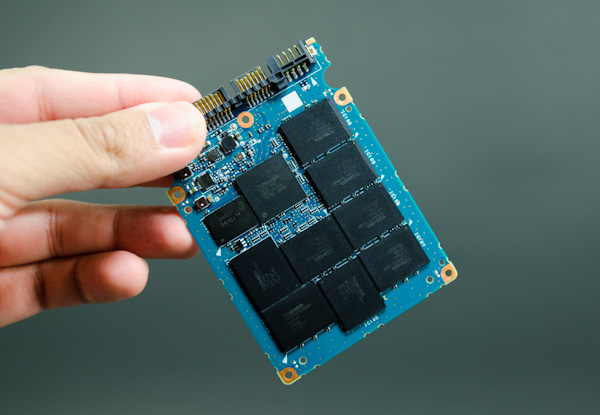Kingston SSDNow V+100 Review
by Anand Lal Shimpi on November 11, 2010 3:05 AM EST- Posted in
- Storage
- SSDs
- Kingston
- SSDNow V+100
I'm not sure what it is about SSD manufacturers and overly complicated product stacks. Kingston has no less than six different SSD brands in its lineup. The E Series, M Series, SSDNow V 100, SSDNow V+ 100, SSDNow V+ 100E and SSDNow V+ 180. The E and M series are just rebranded Intel drives, these use Intel's X25-E and X25-M G2 controllers respectively with Kingston logo on the enclosure. The SSDNow V 100 is an update to the SSDNow V Series drives, both of which use the JMicron JMF618 controller. Don't get this confused with the 30GB SSDNow V Series Boot Drive which actually uses a Toshiba T6UG1XBG controller, also used in the SSDNow V+. Confused yet? It gets better.
The standard V+ is gone and replaced by the new V+ 100, which is what we're here to take a look at today. This drive uses the T6UG1XBG controller but with updated firmware. The new firmware enables two things: very aggressive OS-independent garbage collection and higher overall performance. The former is very important as this is the same controller used in Apple's new MacBook Air. In fact, the performance of the Kingston V+100 drive mimics that of Apple's new SSDs:
| Apple vs. Kingston SSDNow V+100 Performance | ||||||
| Drive | Sequential Write | Sequential Read | Random Write | Random Read | ||
| Apple TS064C 64GB | 185.4 MB/s | 199.7 MB/s | 4.9 MB/s | 19.0 MB/s | ||
| Kingston SSDNow V+100 128GB | 193.1 MB/s | 227.0 MB/s | 4.9 MB/s | 19.7 MB/s | ||
Sequential speed is higher on the Kingston drive but that is likely due to the size difference. Random read/write speed are nearly identical. And there's one phrase in Kingston's press release that sums up why Apple chose this controller for its MacBook Air: "always-on garbage collection". Remember that NAND is written to at the page level (4KB), but erased at the block level (512 pages). Unless told otherwise, SSDs try to retain data as long as possible because to erase a block of NAND usually means erasing a bunch of valid as well as invalid data and then re-writing the valid data again to a new block. Garbage collection is the process by which a block of NAND is cleaned for future writes.

Diagram inspired by IBM Zurich Research Laboratory
If you're too lax with your garbage collection algorithm then write speed will eventually suffer. Each write will eventually have a large penalty associated with it, driving write latency up and throughput down. Too aggressive with garbage collection and drive lifespan suffers. NAND can only be written/erased a finite number of times, aggressively cleaning NAND before it's absolutely necessary will keep write performance high at the expense of wearing out NAND quicker.
Intel was the first to really show us what realtime garbage collection looked like. Here is a graph showing sequential write speed of Intel's X25-V:

The almost periodic square wave formed by the darker red line above shows a horribly fragmented X25-V attempting to clean itself up at every write. Eventually, with enough writes, the X25-V will return to peak performance. At every write request the X25-V controller will attempt to clean some blocks and return to peak performance. The garbage collection isn't seamless but it will eventually restore performance.
Now look at Kingston's SSDNow V+100, both before fragmentation and after:


There's hardly any difference. Actually the best way to see this in work is to look at power draw when firing random write requests all over the drive. The SSDNow V+100 has wild swings in power consumption during our random write test ranging from 1.25W to 3.40W. The swings would happen several times in a window of a couple of seconds. The V+100 is aggressively tries to reorganize writes and recycle bad blocks, more aggressively than we've seen from any other SSD.
The benefit of this is you get peak performance out of the drive regardless of how much you use it, which is perfect for an OS without TRIM support - ahem, OS X. Now you can see why Apple chose this controller.
There is a downside however: write amplification. For every 4KB we randomly write to a location on the drive, the actual amount of data written is much, much greater. It's the cost of constantly cleaning/reorganizing the drive for performance. While I haven't had any 50nm, 4xnm or 3xnm NAND physically wear out on me, the V+100 is the most likely to blow through those program/erase cycles. Keep in mind that at the 3xnm node you no longer have 10,000 cycles, but closer to 5,000 before your NAND dies. On nearly all drives we've tested this isn't an issue, but I would be concerned about the V+100. Concerned enough to recommend running it with 20% free space at all times (at least). The more free space you have, the better job the controller can do wear leveling.












96 Comments
View All Comments
Ezekeel - Thursday, December 9, 2010 - link
That is all you have to do to enable TRIM, yes.However, I was talking about optimizations for an SSD (https://wiki.archlinux.org/index.php/SSD#Tips_for_... http://cptl.org/wp/index.php/2010/03/30/tuning-sol... which you all have to do manually while Windows7 afaik does at least some optimizations automatically if you install it on an SSD, like disabling (Super)PreFetch and indexing. Also partition setup with diskpart under Windows automatically takes care of a proper partition alignment while you still have to do it manually under Linux (http://randomtechoutburst.blogspot.com/2010/03/4k-...
ClagMaster - Monday, November 15, 2010 - link
You are right Mr Shimpi that this is confusing and I got a headache.I am not certain what I am going to get if I order a Kingston Drive. Performance is so diverse and the model nomenclature so similar.
I am going to get a OCZVertex 2 or an Intel X-25 G2 instead. I know what I am getting with these brands.
psyside1 - Sunday, November 21, 2010 - link
Hi Anand and all who read this.
Let me start of by saying that i'm new to SSD tech (noob) and i'm starting to learning but there are some things which where not pointed in the reviews as far as i remember.
Heck, even in this review you said that Inferno is somewhat capped to 50 mb/s if i'm not wrong?
So in short,
Where i live i'm limited to 2 models, one is Patriot Inferno and the Other A-DATA S599 with possibly 50K IOPS firmware, as Newegg and Amazon specs confirm?
Now, does that firmware insure i won't get slowdowns (at some points) like the Inferno model in this review? or there is some more about it. if there is, i really got no idea how is that possible same controller, same build? and heck in most of the test the Vertex 2 is still fastest, even faster then the other drives which now share the 50K IOPS firmware, G.Skill Phoenix pro, Corsair Force etc??
i'm mostly interested in SSD which will have good read/write speeds (4K etc) and to be fast during programs/games installation. I got 6 pcs connected in network so that means alot to me, in short does my needs require higher IOPS firmware or i would not notice any difference in performance during installation of big size programs/games.
Also, is it possible to know what revision you get without actually buying the product? is there any info on the package/sticker or part number? the difference in performance i noticed in some reviews was 2x higher random write (4K) speed on the models with OCZ "exclusive firmware. And as far that point goes i'm totally clueless does it really matter at all, and if its not how that that translate in real world usage?
Please answer i don't want to regret my purchase :(
Thanks and sorry for slight off topic :)
psyside1 - Sunday, November 21, 2010 - link
Sorry for double post there is no edit option, actually Madman007 was asking the same i did on the more appropriate way, my English is bad.
tno - Sunday, May 1, 2011 - link
"Remember that NAND is written to at the page level (4KB), but erased at the block level (512 pages)." I think you meant '512 KB.'Gaucherre - Friday, May 6, 2011 - link
Instead of $259, the Kingston V100+ 96GB is available for $119.99 after rebate from Buy.com. This pricing completely changes the value rating from acceptable to outstanding value! The mail-in rebate is rotating from one online store to another. Last month it was at Newegg.com; right now it's at Buy.com. Next month - who knows? Anyway, the cost per Gigabyte when tested here at Anandtech.com was around $2.70. Now it's $1.25 per Gigabyte, and a 96GB drive is large enough for Windows plus quite a few installed programs and games. Pretty good value. Think I just talked myself into ordering one .......